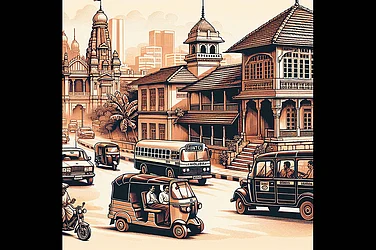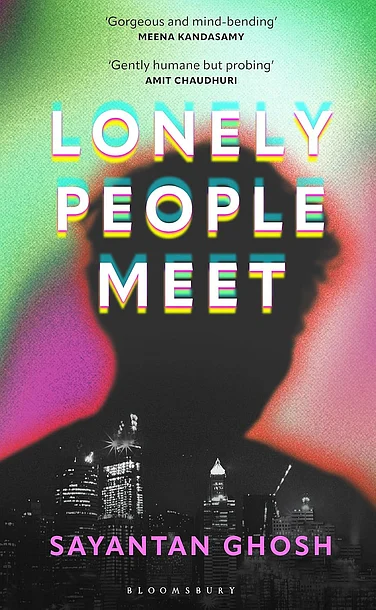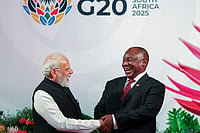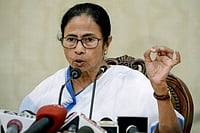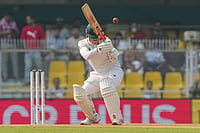First, the presentations I enjoyed: Patricia Uberoi's analysis of the podoerotics and podosemiotics of Guru Dutt's film, Sahib, Bibi Aur Ghulam as an entry into interpreting the film's message and the problematics that popular cinema addresses. Meenakshi Thapan's interviews with middle and upper class women in Delhi as the conduit for understanding the cultural underpinnings of femininity which flowed from women's perceptions of sexuality. S. Niranjana's working out of the notion of the female body as 'situated' in space, time and culture, i.e., the modes in which women walk, work, talk, dress. Poonam Zutshi's archaeology of the menstruating woman as part of the discourse on blood and theories of humours, of fermentation and of reflexes through hysteria and melancholy to the heretical figure of the witch and, finally, the menstrual cycle in an endocrinological sense.
Of the three essays that seek to extrapolate the social construction of gender identity, T. Sarkar's is the most interesting—drawing upon the richness of theatre, song, paintings and prints that grew around the tragedy of Elokeshi. These sources provide kaleidoscopic images of the responses of the 'samaj' to adultery, murder and a titillating trial. Though Sarkar's separation of the erudite from the 'low life of literature' linked to a lower middle class is not a happy device.
It is, however, in the broader connections Sarkar makes between the 'event' and the problematic of the 'Hindu community' and 'Hindu nationhood' that greater insight and less subjective reaction is called for. For instance, the logic of Dayabhog flowed from the social-domestic relations of economic dependency. Property rights were institutionalised in the patriarchical family. Sarkar's references to 'Hindu nationalists' employ a blanket term, implying bad faith all along the line and denying an equally split auto-critique among the ranks of the all-India reformist Hindus.
As Tapan Raychaudhuri pointed out (in Construction of Hinduism), Vivekananda, who "represents the high noon of a Hindu revival", described the agitation against the Age of Consent Bill as a matter for great shame. He sarcastically referred the protectors of Hindu morality to the Grihyautra—the provision that a girl child must be given in marriage before she learns to masturbate.
No bald formulations on 'Brahmanism and Hinduism' are adequate in unravelling the history of Indian nation-making and its relationship with gendered identities and female sexuality. S. Bayly has recently provided a more nuanced and intelligible perspective on the 'modernising' project of nationhood. The Hindu National Social Conference and English language publications such as the Indian Social Reformer as also the wide range of vernacular debate and polemic in the late 19th century expressed a striking pan-Indian probing and critiquing of caste, the claims of Brahmins to possess unique sacred knowledge, pre-pubescent marriages, the penitential seclusion of widows and other issues of corporate sexual honour and propriety.Agonising self-scrutiny, both personally and collectively, was a hallmark of this period.
J. Bagchi's reading of Jyotirmoyee Devi's work as a "sinister game in which the 'community' enters with nationhood" in order to preserve "caste-class hegemony" is simplistic. The British presence in India is seen as "intervening", or "colluding with upper segments of Hindus" or contrarily, projecting its own cultural superiority. The reduction of the dualities of the colonist subject and the inward recoil of the 'community' to essentialist brahmanical anxieties of control and consolidation of the Hindu nation gives a propagandist edge to the arguments.
An interesting insight emerges on the work, if one contrasts the contributions by S. Tharu and U. Butalia. Tharu's asides on the "Nehruvian/socialist scheme of things" which link to "a brahmanism that is constantly updating its patriarchy" and re-empowering "the middle class with Fund-Bank aspirations" are singularly tragicomic. They teach nothing about class and embodiment.
U. Butalia, on the other hand, maintains a balance of analysis and narration. The dialectic of benevolence and supplication, of protection and victimhood, of the exercise of power and the stance of powerlessness is brought out in the context of the deeply gendered narrative of partition. Consequently, it rarely descends into mere polemic or speaks in the accents of a tract.












